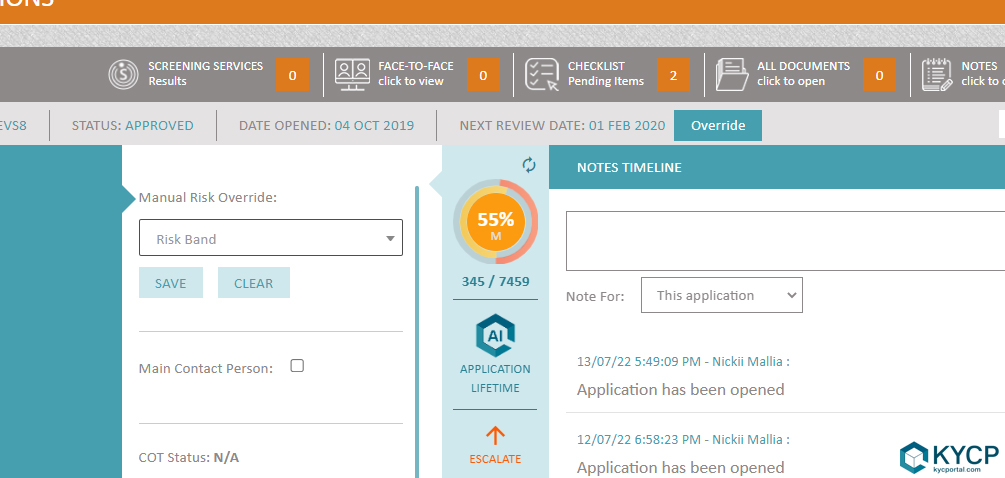The Historical AI Engine is an optional module in KYC Portal that stores and audits all historical actions within the system at the application, entity, and field levels. A tool that is able to track the entire history of an application’s lifetime, including the actions that the teams are taking on the application based on risk.
This enables KYCP to adopt intelligence on such decisions that were taken in the past to present information which is invaluable when it comes to understanding the way internal processes can be improved and how much due diligence is costing the organization.
KYC Portal’s Application Lifetime Module
The optional Historical AI Engine within KYC Portal comes with various options. This article explains the “Application Lifetime” module within an application, which gives great detail about the historical aspect of the application itself.
In the off-the-shelf version of KYC Portal, clicking on the top risk dial gives you a snapshot of the risk over time of the application. This module stores the snapshot of risk whenever there is a risk band change or else whenever there is a new addition or removal of a related party within the structure.

Application History
When clicking on the “Application Lifetime” button (which is only available with the Historical AI Engine module), the system will start showing you the application history of risk changes over time, even within the same band of risk. It also keeps a snapshot of the statuses, so whenever you change the status of an application, linked to how the risk was at that point in time.

Compare Snapshots
You can also compare snapshots which allow you to investigate and analyze what changed in an application and what led to such risk changes. It allows you to open the snapshot of a certain point in time and compare it with another date in the left and right comparison chart.
Here it will show you all modifications such as removal, changing, or adding of fields, all data, and document changes within the application, so the system is keeping a full tamper-proof audit of all the changes allowing you to investigate changes across the application.
This becomes very handy because at a glance, you can see all the details of changes. If you have a structure with multiple entities, it will keep a full audit of changes, per entity, within the application.

Application Lifetime Analysis
The system is also storing all the potential and probable outcomes of the application based on past decisions, so the system is studying all the actions that your teams are taking based on previous applications; how they are choosing the status, and also what the data of the fields were in the application when then status was moved.
This information gives an insight into the cost of compliance and cost of due diligence for an application in advance of them being worked on and completed, giving you an insight into how much work should be most likely done on this application.

The above focuses on the AI history of the application itself. The Historical AI Engine also has add-ons that are available within the Reporting module of the KYC Portal.
